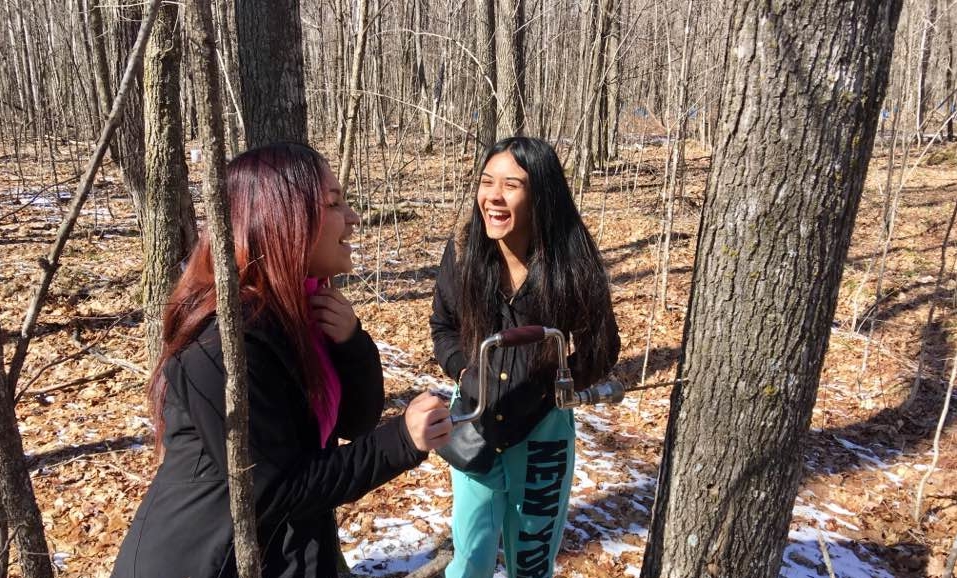My hope is that parents can strip away the fear of not conforming and reframe their thinking from “I hope my child will not fail in life” to “I hope my child will thrive in life.”
Cate Han, Co-Founder, Hudson Lab School
When Education Reimagined began developing its map of learner-centered environments, there were a few outstanding questions: How many learner-centered environments are actually out there? Would we dive into the research and only discover a small handful? And, how many would it take for us to consider this transformational idea a movement?
Over four years later (and counting), our cautious wonderings have been swept aside. As of this writing, we have identified over 120 environments across 41 states at varying stages of their learner-centered journey, written 79 learner-centered profiles, conducted 80 interviews with learner-centered leaders of all ages, and featured over 140 articles authored by learner-centered actors.
The most encouraging development in our research and outreach over the past two years, in particular, has been the discovery of many new (less than five years old) or “coming soon” learner-centered environments. The individuals who have led the development and launch of these spaces regularly cite one or a combination of three motivators to create something that doesn’t abide by the norms of the conventional system:
- Personal experiences in the past as a young learner or in the present as a parent that have them wanting something different for their children and/or community
- Professional experiences as an educator or parallel profession serving young people that inspire them that there is another education future worth building
- Discovering and/or visiting a learner-centered environment
Each motivation surfaces a common question: What if we did education differently? What would we create? Explore six learner-centered environments and conversations with their leaders on what their respective communities have designed.
Family Star — Denver, CO
A group of local community activists saw the achievement gap between low-income and high-income children, along with the overall deterioration of their Five Points neighborhood, as two things that were too big to ignore. After establishing themselves as a 501(c)(3) non-profit in 1988, they sent five neighborhood women to become certified Montessori teachers for infants and toddlers. Thirty years later, Family Star continues to expand upon its original mission—“to discover the child in inclusive Montessori environments and inspire a movement for educating the human potential.”
Nawayee Center School — Minneapolis, MN
If you had to design a learning model that would be applicable for young learners seven generations from now, what would you create? The Seventh Generation Principle, which has been at the core of many Native American traditions for millennia, is likewise at the heart of Nawayee Center School’s learning philosophy. In practice, this personalized, relevant, and contextualized and socially embedded learning experience is built on trust, which is developed through active and intentional listening. Therapists trained in trauma healing, listen. Educators trained in observing behaviors without judgement, listen. Young people mentored in self-regulation within the context of relationships, listen. Through listening, everyone within the learning community cultivates a sense of learner agency that enhances their ability to “dream, intuit, and create” for the betterment of the community inside and outside Nawayee Center School’s walls.
Hudson Lab School — Hastings-On-Hudson, NY
For Hudson Lab School co-founders, Cate Han and Stacey Seltzer, they wanted their learner-centered environment to be in a space that was truly community-focused. Cate, having built a relationship with the community leaders at Andrus on Hudson senior living community during a previous project, pitched the idea of integrating a learner-centered environment within the 26-acre campus. The idea was a hit, and now young learners and seniors go about their weeks in harmony. The young learners grow such a close connection to their elders, they commonly tackle projects related to the natural problems that come with age—discovering the power of serving others.
High School for Recording Arts — St. Paul, MN
High School for Recording Arts (HSRA) began as a recording studio for up-and-coming artists in the Twin Cities. However, more and more, the studio’s patrons were largely young people who were passionate about music (and skipping school). Over two decades, the recording studio organically transformed into a full-fledged learner-centered environment—serving St. Paul youth “who may have dropped out or been pushed out from [conventional learning environments] to complete their diplomas through a love of music and the music business.” HSRA leaders appreciate what they’ve been able to accomplish since their official opening in 2001. And, they are ready to take their lessons learned and assist communities throughout the country to establish similar programs that match their unique learners’ needs.
Northwest Passage High School — Coon Rapids, MN
What happens when you build a staff of educators with a focus on mindset over content knowledge? At Northwest Passage High School (NWPHS), this approach has generated an unwavering commitment to learner-centered education, high employee retention, and a staff that has a diverse range of experience working with youth inside and outside the walls of a school building. Northwest Passage High School has been on their learner-centered journey for 15 years. And, the leaders are quick to emphasize what you see today didn’t take shape overnight. Rather, it was a steady commitment to knowing education could be done better and taking the incremental steps necessary to make it happen.
Workspace Education — Bethel, CT
Using a family-centric framework, Workspace Education has integrated a cornucopia of education pedagogies into their work. With Workspace’s mix and match model, they allow the flexibility for the learner and family to choose what best fits their interests and needs. At Workspace, a learner can engage with any topic of interest and explore it in the way that makes the most sense to them because every style of learning is available—to name a few, project-based learning; conventional, subject-based learning; and family learning where parents and children co-create projects that matter to all of them.
